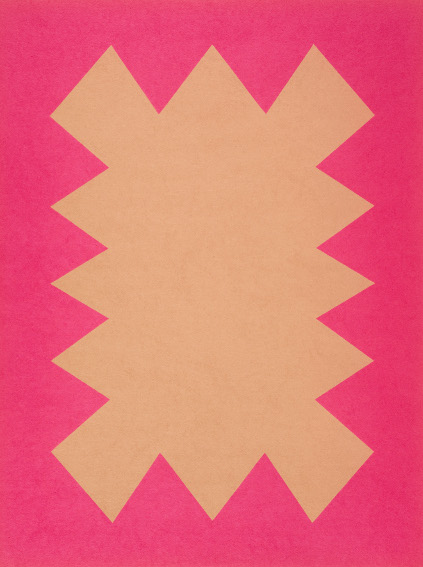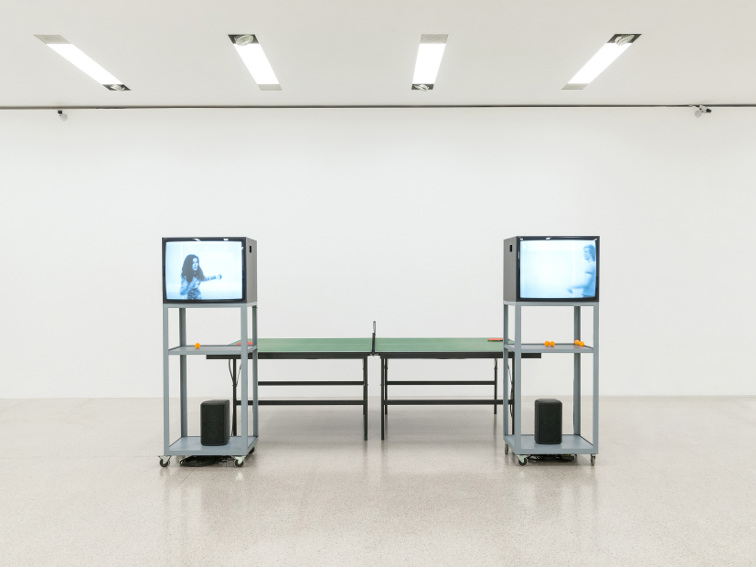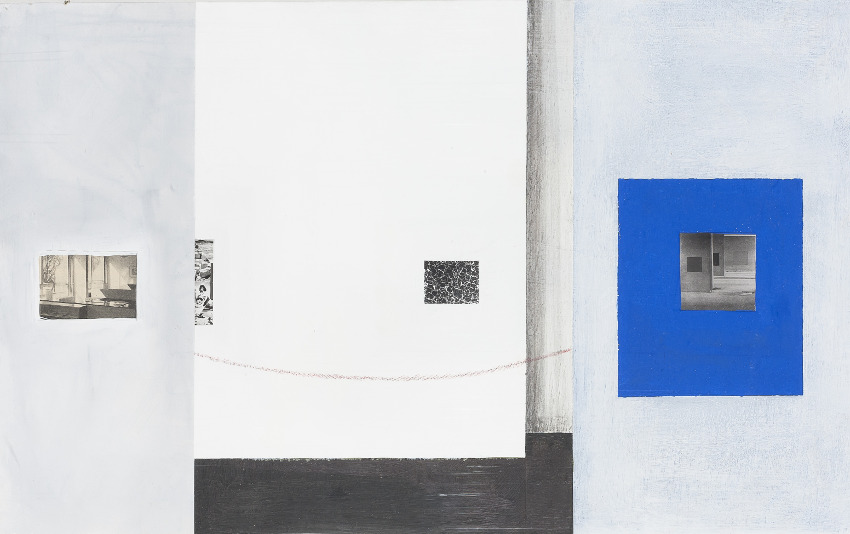
Ernst Caramelle, A Resume
The Museum Moderner Kunst (mumok) in Vienna, Austria, recently opened the first ever retrospective of the work of conceptual artist Ernst Caramelle. The whimsically named exhibition – Ernst Caramelle: A Résumé – takes its sub-title from the thesis Caramelle turned in to complete his studies at the University of Applied Arts in Vienna in 1976. Rather than a traditional written paper, his thesis consisted of a multi-media assortment of drawings, collages, an audio tape, a Super-8 film, a bottle and a photograph of the bottle, all stuffed into a cardboard box. The objects and artworks contained in the box were not important except in as far as they illuminated a concept; the idea was the work. His thesis illustrated the complexity, and perhaps frivolousness, of any artistic attempt to convey a concept in concrete form. It raised questions such as: is the photograph of the bottle or the bottle itself more representative of the idea of a bottle; is the written word more pertinent than the recorded word; and does a roll of film possess objective value or is its value contained within whatever content it records? Taking that project as the starting point for his career as an artist, Caramelle has continually made work that embraces the inherent challenges that emerge when the world of forms intersects with the world of ideas. The meaning and importance of all of his work lies in whether we as viewers are literate enough to make sense of what we see when we experience what he has done. Our ability – or lack thereof – to read his work raises questions about whether it is figurative or abstract, or even whether any such distinction truly exists at all.
Tests of Time
Among the simplest, and most curious, bodies of work Caramelle has created are his “abstract” Sun Pieces, a series he began making in the 1980s. I put abstract in quotation marks because although the works are considered abstract by most viewers, I do not think the term applies. Caramelle describes the mediums used to create these works as “sun on paper.” His method is to cut out a stenciled shape, lay that stencil on top of a sheet of colored paper, and then set the paper in a place where it can receive sunlight for long periods of time, sometimes years. Eventually, the sunlight fades the colored paper creating a burned out image of the stenciled shape. Although the formal visual elements of the finished object can be considered abstract, I do not consider the object to be the work. The work is the idea, and the idea is to represent the effects of sunlight on a pigmented surface over time. In this case, the relic of the artistic process is about as realistic and concrete of a portrayal of its instigating idea as I can imagine.

Ernst Caramelle - Ohne Titel, 1990. Sonne auf Papier / Sun on paper. 61 x 45,5 cm. © Ernst Caramelle
Caramelle also deploys the passage of time as a concept through the device of repetition. The idea that something has been done, and done again, appears frequently in his various projects. One way he achieves repetition is by repeating a simple visual element, like a square painted on a wall, several times in the same image. Or in other examples, such as his famous installation “Video-Ping-Pong” (1974), he achieves repetition by blending recordings of an activity with performances of people engaged in that same activity in the present moment. “Video Ping Pong” includes two video screens at either end of a ping pong table. Each screen shows a close up of someone playing the game of ping pong. As the images on the two screens bat the ball back and forth, behind the screens two actual people play ping pong in real life. While watching, viewers cannot help but confront both the visual repetition and the passage of time as we consider an activity that remains largely the same over the decades. There is a whimsical visual effect going on, but in the end the part of the work that is remembered is the repetition: repetitive images of a repetitive game.

Ernst Caramelle - Video-Ping-Pong, 1974. Installation, Maße variabel / Installation, dimensions variable. (Installationsansicht Studio MIT, Cambridge, 1975 / Installation view, studio at MIT, Cambridge, MA, 1975). Photo: Markus Wörgötter. Courtesy Sammlung Generali Foundation, Wien
Questions of Space
In addition to time and repetition, space is also important to Caramelle. His works raise curious concerns about physical versus visual space, and how space can alter, and be altered by, a work of art. For example, his painting “Spiegelbild (Mirror Image)” (1991) shows pictures hanging on the wall in a gallery. The work is created on a slat of wood which is then hung on a gallery wall. It is a picture of pictures hanging in a gallery hanging in a gallery. If someone were looking out from inside the picture they would see roughly the same thing we see looking into the picture. Some of the pictures in the piece are drawn or painted; others are photographs collaged into the scene. The image is technically “realistic,” since the image and its parts – the photographs especially – show fragments of “reality.”

Ernst Caramelle - Spiegelbild, 1991. (Mirror Image). Gesso, Acryl, Fotografie, collagiert auf Holz / Gesso, acrylic, photograph collaged on wood. 34 x 55 cm. Ausstellungsansicht / Exhibition view Bremer Kunstpreis, Kunsthalle Bremen, 1991. © Photo: Stefan Wolf Lucks. Courtesy Sammlung Michael Loulakis, Frankfurt
Meanwhile, across the center of “Spiegelbild (Mirror Image)” we see a gilded rope blocking viewers from entering the back of the gallery. There is something important going on in the hidden spaces of this alternative world of the picture. Even if we were to inhabit the illusionistic space we would not be able to see everything. As with his “Sun Pieces,” Caramelle is playing with the ideas of figuration and abstraction with this work. Even though most people would say “Spiegelbild (Mirror Image)” is a realistic image because it shows something recognizable from the real world, there is an argument to made that it is in fact abstract since the forms are not representations of what they seem to be; they are entry points into a world of questions about whether what I think I see is actually what I see. As the title suggests, they are reminders that in mirrors, paintings, photographs, and even in reality, most things are hidden from our sight. Ernst Caramelle: A Résumé is on view at mumok through 28 April 2019.
Featured image: Ernst Caramelle - Untitled (Klimt), 2011. Mischtechnik auf Holz / Mixed media on wood. 47 x 69,7 cm. Photo: Mai 36 Galerie, Zürich / Zurich. Courtesy Philip and Alexandra Burchard Collection, Frankfurt. © Ernst Caramelle
By Phillip Barcio






